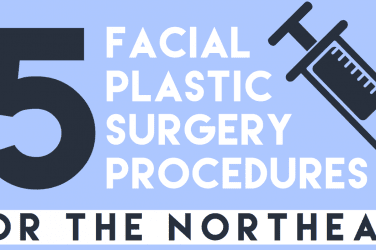If you’ve been hurt recently or are having persistent pain, it’s time to consult a physician. You may be thinking if a visit to your primary care physician is worthwhile or whether you should seek treatment directly from an Orthopaedic Spine Surgeon in New York. After all, you frequently believe that your primary care physician ought to be your first line of call. However, depending on the nature of your accident or health problem, consult a specialist such as an orthopaedic physician may save you time and money.
What Does a Primary Care Doctor Do?
What is the distinction between a family physician and an orthopaedic surgeon? A primary care physician is a skilled internal medicine physician who acts as a patient’s initial point of contact in the healthcare system. The majority of individuals will consult a primary care physician if they are suffering symptoms for which there is no recognized diagnosis or cause.
In addition to providing urgent diagnosis and treatment, a primary care physician is critical for preventive care and long-term health maintenance. A primary care physician will organize care for their patients’ speciality therapy if they have a health problem or accident that requires specialized care. Getting a primary care physician for yourself is advantageous in that you’ll have someone familiar with your medical history on hand in the event that you want further instruction for specialist treatment.
What is an Orthopaedic Spine Surgeon’s Job?
However, while your primary care physician should be aware of the overall picture of your health, he or she may lack the specialized knowledge necessary to treat specific problems efficiently. In these situations, it will be beneficial to consult with a professional, such as an orthopaedic physician. Unlike primary care physicians, specialists are focused on a certain field of medicine and have a greater depth of knowledge and awareness of the problems that aren’t handled by main care physicians.
An orthopaedic physician is a medical professional who specializes in the treatment of injuries and illnesses involving the musculoskeletal system. The musculoskeletal system is comprised of the bones, joints, tendons, muscles, nerves, ligaments, and cartilage that support and protect the body. Orthopaedic specialists treat injuries to the musculoskeletal system using both surgical and non-surgical methods, and they will assist you in determining the best course of therapy for your particular situation.
Attending Your Orthopaedic Appointment: What to Expect
Following your decision to consult with an orthopaedic expert, here’s what you should anticipate from your appointment:
- Paperwork. Expect to fill out documentation describing your complaints, medical history, and insurance, just as you would at any other first-time doctor’s appointment. Your primary care doctor can assist you by giving documentation of previous ailments and treatments that you have received.
- Exam. First and foremost, your orthopaedic expert will get to understand you as a patient and learn about your medical history. Afterwards, they will look for any places that are giving you pain or suffering. The examination may involve assessments of limb strength as well as a range of motion, among other things.
- Additional Tests. If your orthopaedic expert is unable to detect the problem during the initial examination, he or she may prescribe further tests like x-rays and magnetic resonance imaging (MRI) to more accurately pinpoint the issue.
- Treatment Plan. Medication can commence once your orthopaedic doctor has diagnosed the condition. Numerous orthopaedic problems can be treated non-invasively using oral or injectable medicines, at-home exercise, as well as physical therapy. Your expert will develop a treatment plan specifically for you, including any required surgical procedures.
Types of Spine Surgery Performed by an Orthopaedic Spine Surgeon in New York
One of the most popular causes, why people seek medical assistance every year, is due to back discomfort and this is because chronic backaches can cause disruption on your career and your everyday life and back discomfort can be caused by many things like spinal disc deformities, instability, injury, or degeneration.
There are several non-surgical and surgical therapies available to assist treat or controlling back pain and there are physicians who usually are making all the effort in treating back pain without having to undergo surgery if possible, but still, there are situations when surgery is the only option left.
If your doctor determines that your spinal discomfort or condition cannot be resolved non-surgically, he or she may propose spine surgery, and with that, your doctor may prescribe one of many spinal operations according to the underlying reason for your back discomfort, and here are a few examples:
Discectomy
A discectomy is a surgical procedure that involves the removal of herniated discs which is more commonly known as slipped discs which usually occurs when there is a part of the disc that ruptures because of resistance to another layer that enters the spinal canal. Discectomy operations include the following:
- Percutaneous Discectomy is a technique in which a portion of a herniated disc is removed to relieve discomfort caused by nerve compression.
- Microsurgical Discectomy is a less invasive surgical treatment used to treat herniated discs.
- Anterior Cervical Discectomy and Fusion or ACDF is a neck herniated disc is and the procedure is to remove the neck herniated disc during this treatment. Additionally, it is used to treat degenerative discs in the neck.
- Lumbar Discectomy is an operation in which a herniated or degenerative disc in the lower section of the spine is removed.
Laminectomy
The lamina, or the rear of the spinal canal, is removed during a laminectomy and this type of surgery is also used to assist expand the spinal column in individuals with spinal stenosis and then this will help aid in the relief of pain induced by nerve root pressure.
Spinal Cord Stimulation
Underneath the skin, a spinal cord stimulator or SCS is going to be inserted to transmit modest electric currents to the brain, blocking pain signals. In order to alleviate discomfort, an epidural injection is administered which is a non-surgical technique and then the operation is going to be performed on the area that surrounds the spinal cord.
Photo by Tom Claes







